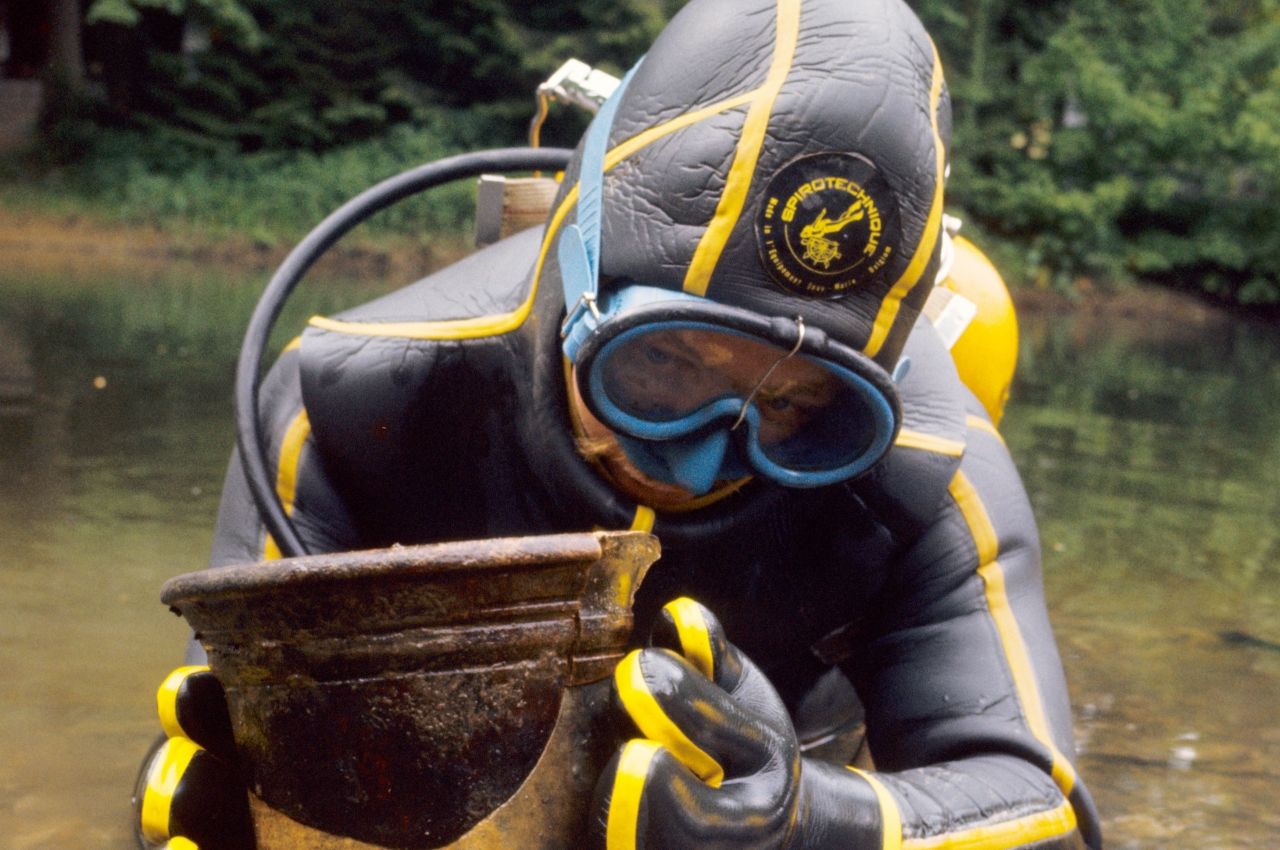Once upon a time there was a Cave...
The Cave of Han has been known to mankind since the dawn of time. A variety of artefacts dating back to 10.500 years ago were uncovered by archaeologists diving on the bottom of the river Lesse. The objects had probably been thrown into the water as offerings to the gods. According to historians, the Hole of Han, where the Lesse resurfaces, was a place of pilgrimage as well a place of worship. As of the second half of the 19th century, with the birth of tourism, a totally different type of pilgrims travel to the Cave of Han...
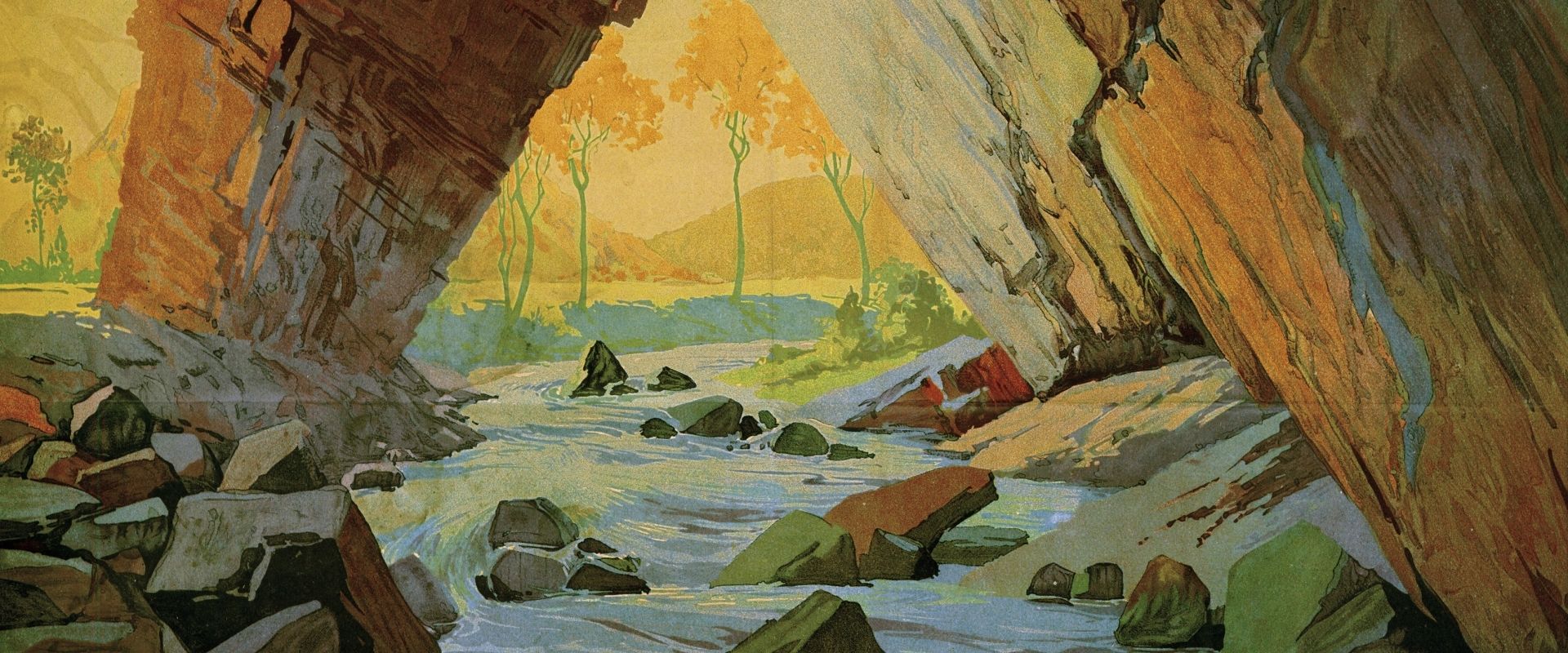
Early 19th century
At the time, the Cave of Han is well-known, but only a lucky few visit the Cave; namely the scientists who've provided us with topographical maps
and detailed descriptions. The Cave is also visited by a handful of adventurous villagers, who venture into its galleries by candlelight. Among these early explorers is the baron Edouard de Spandl, who lived in the area and who was a nature enthusiast who visited the Cave whenever possible.
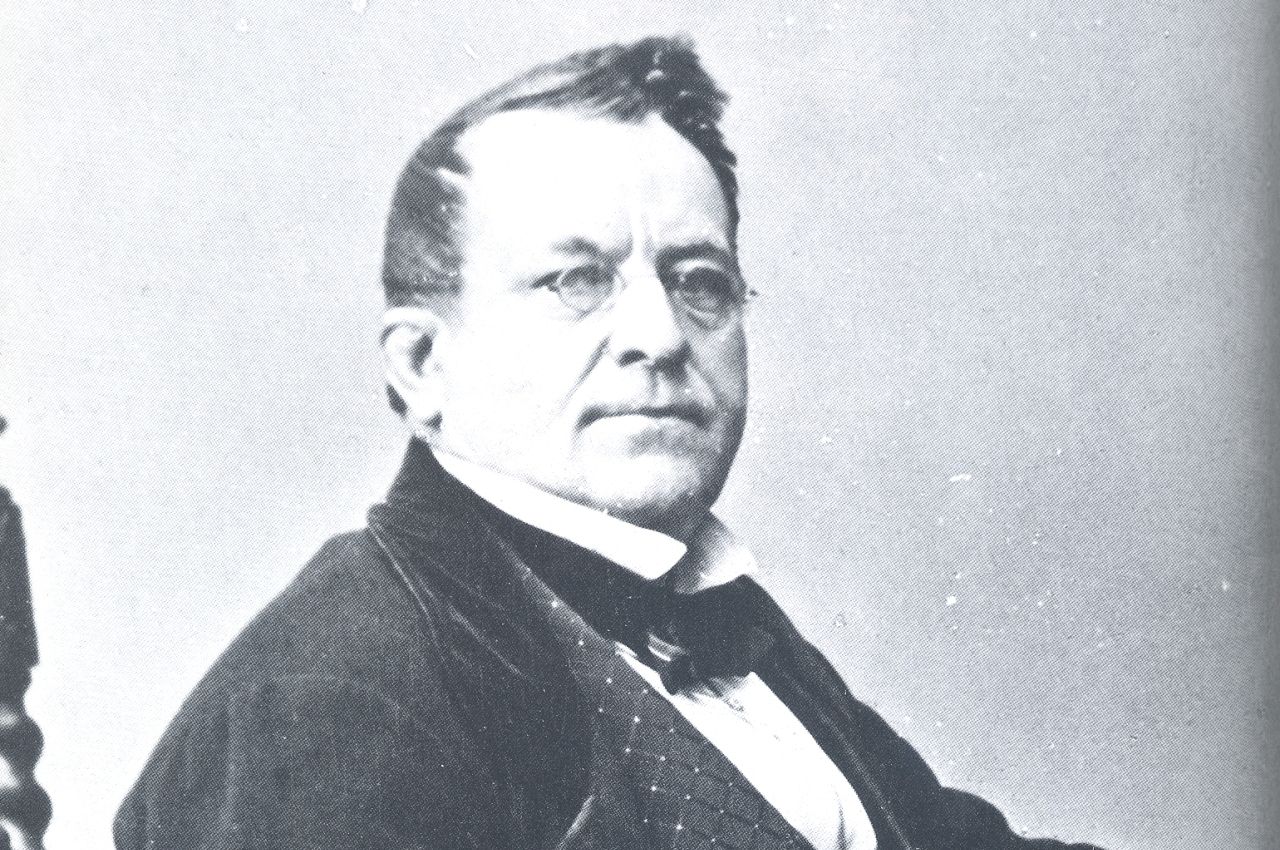
Opening to the public
Edouard de Spandl is so entranced by the Cave that he decides to purchase the domain, so he can "share these marvels" with the whole world. The deed of sale is signed in 1856. For the baron de Spandl, it is an act of pure passion.
Without further ado, he starts important infrastructure works to make the Cave accessible to as many visitors as possible, creating Belgium's first tourism company, also one of the first in the world!
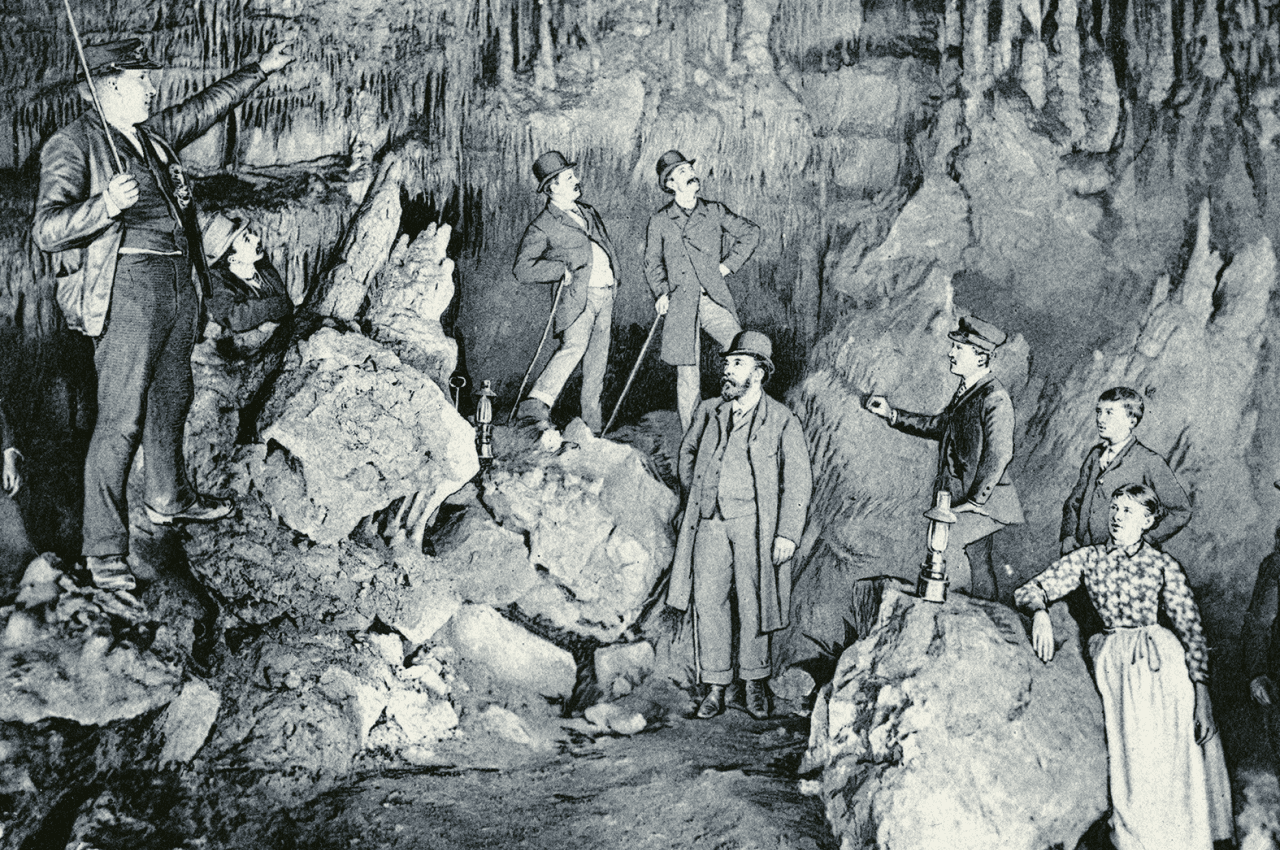
An accessible Cave
This is what was written in the visitor's guide and album from 1859 about the works carried out to make the Cave more accessible:
“Tourists that haven't visited the Cave for a couple of years will be astounded by the many improvements made to make the tour easier: the embankments, the clearings, the stairs, the bridges crossing the lake, the opening of galleries, the new lighting system etc. At the same time, all of these improvement works are hardly noticeable because the owner has done everything in his power in order to respect the raw, unspoiled and in many ways impossible nature of these subterranean monuments.”
Tourists flock to the Cave...
His whole life, Edouard de Spandl will strive to improve
the Cave's accessibility, to discover new chambers and put into place a structured framework to welcome and guide the visitors. And the tourists, among which many a celebrity, travelled from far and wide to visit the Cave. In 1862, Victor Hugo vacations in Han. In 1869, the author Georges Sand visits the Cave. You can see her testimony, engraved in a stone nearby the Cave exit:
“The Caves of Han… a harsh 3 hour journey through the heart of the mountain, skirting the precipices running along the subterranean Lesse, an abysmal torrent that is either tranquil or in turmoil, ever surrounded by obscurity... The journey ends on an underground lake where you board a boat before seeing the daylight again, as if in a fairytale."

The Universal Exposition
As of the late 19th century, the Cave of Han is hailed as essential sightseeing in the tourist guides and the magnificent, large posters, created in collaboration with the Belgian Railways and displayed in train stations all over Belgium and Europe, inviting travellers to visit the Cave.
The Cave takes part in the Brussels International Exposition of 1897, exhibiting high-quality underground photographs (a world premiere).
All of these efforts end up bearing fruit. In the period between the two World Wars, the Cave of Han welcomed an average of 80.000 visitors per year, which at the time is huge!
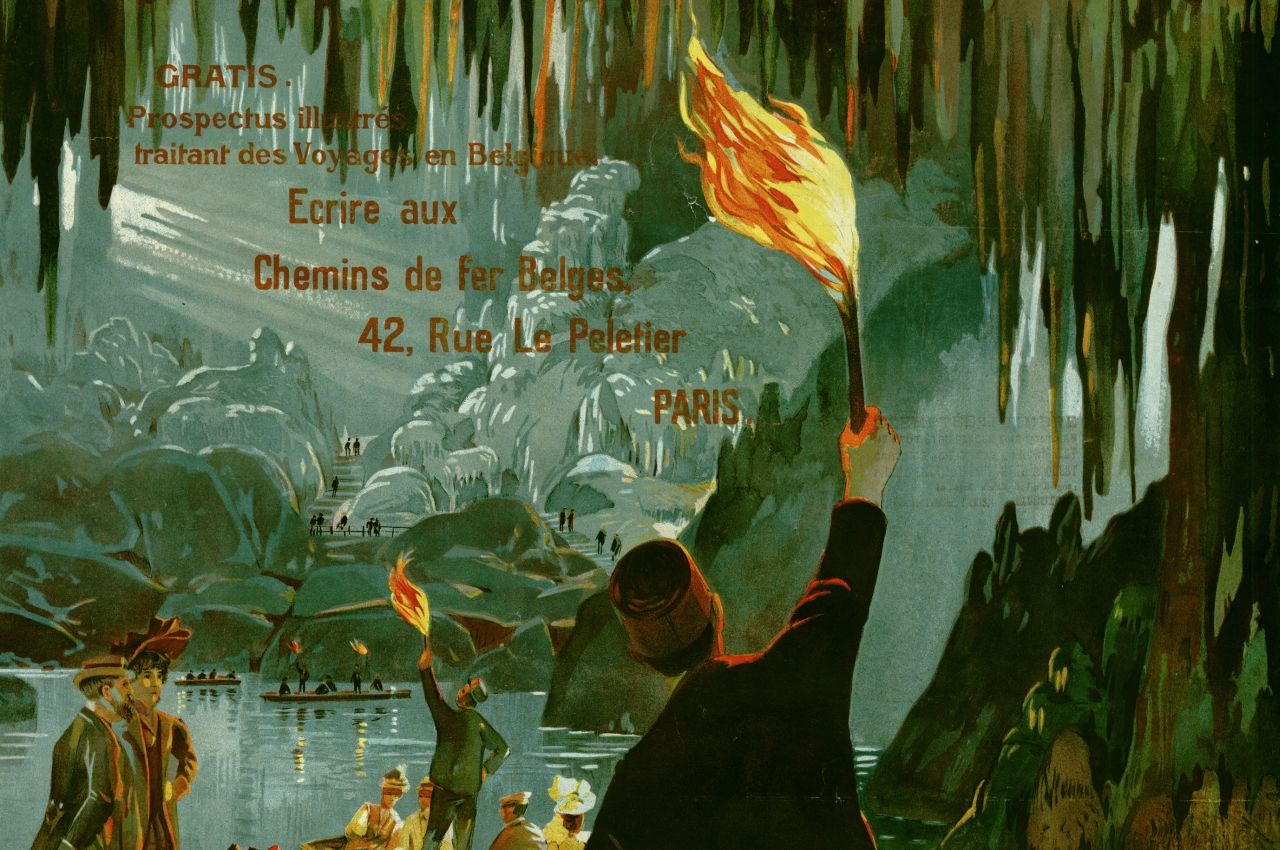
A few milestones
The history of the showcave is dotted with key moments when the Domain has been a trailblazer in the fields of technology and innovation:
1897: the Cave is one of the first in the world to be equipped with electric lights.
1904: in partnership with Belgian Railways, a steam train line is laid out, linking Rochefort to Han-sur-Lesse and taking visitors from the Domain to the top of the Boine Massif, from where they continue on foot towards the Cave entrance.
1963: after discovering a new stretch between the Vigneron room and the Mystérieuses chamber, the tour is adapted and improved.
1970: creation of the Wildlife Park, stretching out over the Boine Massif and the Chavée, the Lesse's abandoned river valley. More information
2013: first stages of the installation of LED-lighting in the Cave. In 2018, the Cave is one of the first in the world to be entirely equipped with LED-lighting. The lighting highlights the concretions, making the Cave more beautiful than ever to behold...
2018: Origin, the new immersive sound and light show, created by Luc Petit, a famous Belgian show creator and artistic director, is shown in the Weapons' Room, using cutting-edge video-mapping and laser effects. It's probably the “most stunning underground show in the world".

A pillar of Walloon tourism
Since it opened to the public in 1857, the Cave has welcomed over 23 million visitors, and nowadays welcomes over 300.000 visitors per year.
In 2018, the Famenne-Ardennes area, which is crossed by a narrow strip of limestone known as the “Calestienne”, becomes Belgium's very first UNESCO Global Geopark. The Cave of Han lies at the very heart of this extraordinary geological region.
In 2019, the Cave of Han was voted “Wallonia's favourite tourist heritage”.
.jpg)
A scientific hotspot
In addition to being essential sightseeing, the Cave of Han is a living science lab, where geologists rub shoulders with hydrogeologists, paleoclimatologists, biologists, archaeologists and speleologists from universities and scientific institutions from Belgium and beyond our borders. All of them are driven by the same fascination for this underground world that still has so many mysteries to reveal.
